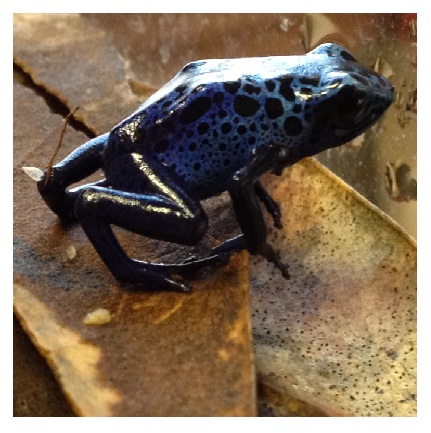Adaptations
Dendrobates azureus has evolved from its ancestors through specific adaptations which allow it to live an amphibian lifestyle. As mentioned before, the Dyeing dart frog has no trace of webbing between its toes, unlike the American toad and the American bullfrog which both have mild to extreme webbing between their toes.
All frogs have a two circuit circulation system, meaning that their blood flows from the heart to the body and then back to the heart where it is pumped to the lungs and skin capillaries, picking up oxygen before heading back to the heart and then to the body. Frogs breathe partly through their skin which allows them to stay submerged underwater for longer periods of time than you or I. Additionally, this means that their skin must stay moist to allow the passage of oxygen and other gasses to reach the capillaries of their bodies.
Beyond the heart, frogs have some pretty obvious characteristics which help them survive in their natural habitat. The Dyeing dart frog has longer and stronger back limbs which allow for an enhanced jumping ability. Their toe pads, showcased on the Classifications page, allows for adhesion to flat surfaces such as the glass in my frogs' terrarium.
To catch prey, such as the flies I occasionally dump into my tank, the Dyeing dart frog will approach the insect, lash out with a sticky tongue, and then draw the poor creature into its mouth. Since frogs don't possess muscles to chew and swallow their food, they will close and allow their eyes to sink through the occipital opening in the skull in order to force the food item down their throat. It sometimes appears as though the frog is blinking while they eat.
Here's a rough video of my poison dart frogs feeding on some calcium and vitamin D covered melanogaster wingless fruit flies.
